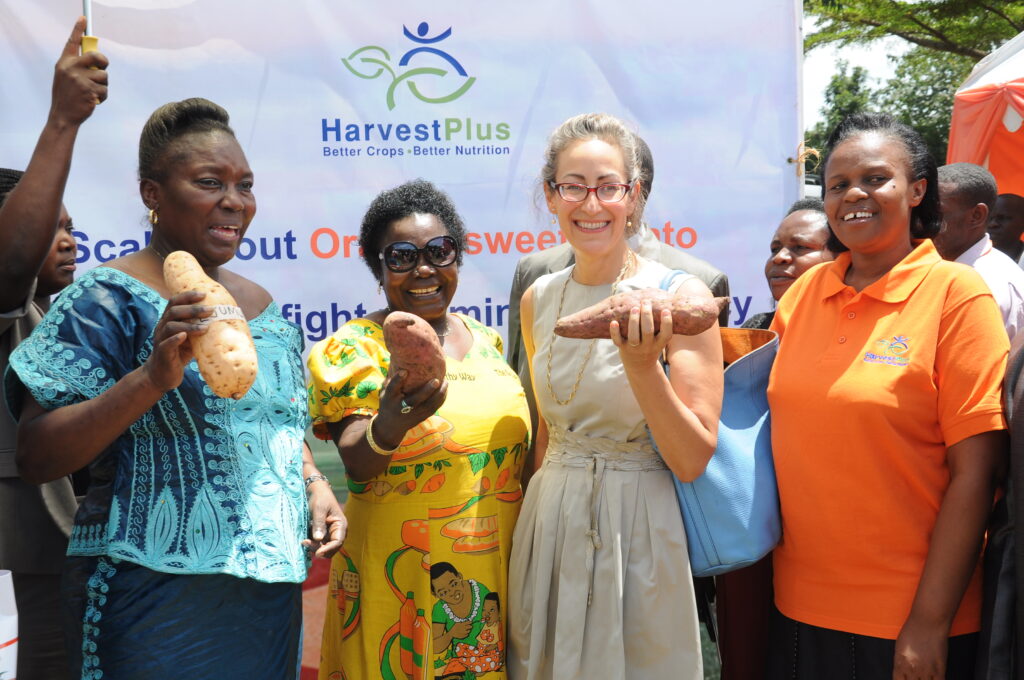As 2015 draws to a close, nearly 3 million farming households in target countries are benefiting from nutritious staple food crops. These biofortified crops provide important vitamins and minerals in the diets of consumers, and boast traits desired by farmers, such as high yields and resistance to viruses and diseases. Farmers and their families are already reaping the benefits.
In Africa, orange sweet potato is helping children ward off, or minimize the occurrence and duration of, diarrhea, one of the leading causes of child mortality on the continent. This nutritious crop can provide children with their full daily dose of vitamin A, prompting countries like Uganda to scale up its dissemination nationally. The nutritional benefits of another vitamin A biofortified crop, orange maize, has convinced Zambia to officially launch widespread commercial sales of the crop to make it available across the country. These crops, along with vitamin A cassava in Nigeria and the Democratic Republic of Congo, and iron beans in Rwanda, are nourishing and providing a livelihood to more than 2 million African farming households.
“This crop has great yield, cooks fast, and is delicious,” enthuses Rwandan farmer Gloria Uwizeyimana referring to iron beans. “Now my family wants to eat only these beans, not the ordinary varieties, so I’m going to grow iron beans season after season.”
Biofortified crops are also making a difference in Asia. In India, where nearly three out of every four children aged under 5 lack enough iron in their bodies, biofortified iron pearl millet promises to become an important source of the nutrient in states like Maharashtra that depend on the crop. With enough iron to meet up to 80 percent of a consumer’s daily need, iron pearl millet has shown that it can reverse iron deficiency among Indian school children. Meanwhile, farming households in Bangladesh can expect even more benefits from zinc rice as more varieties are made available in the country. One new variety not only has higher yields, but also matures nearly three weeks earlier than non-biofortified rice, giving farmers precious extra days to plant short duration crops ahead of the next rice cropping season. Biofortified rice varieties provide more than half of daily zinc needs, easing the decision by farmers such as Fazlur Rahman to adopt the crop.
“The extra zinc in this crop will help in my child’s development, that’s why I am excited about cultivating it,” Rahman affirms.
Over the next four years, HarvestPlus and its partners plan to reach some 15 million farming households with biofortified nutritious crops.
